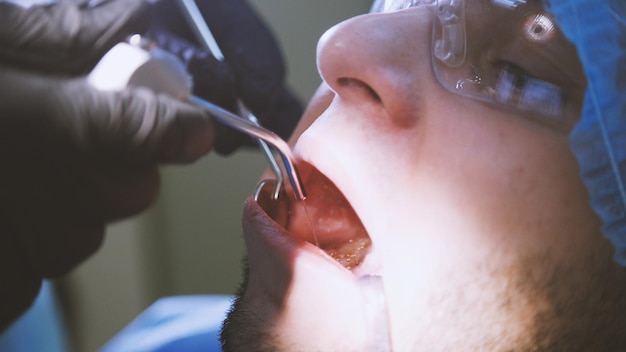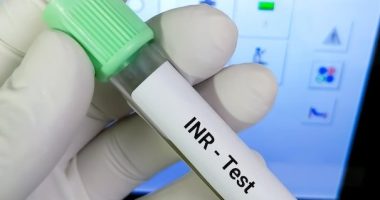New research conducted by a team headed by Larissa Emilly Fiusa do Monte at a Brazilian cancer hospital sheds light on the progression of quality of life in patients who have undergone total laryngectomy due to laryngeal cancer and subsequently utilize an electrolarynx for communication. Laryngectomy, a procedure that can severely impair vocal abilities, leads to significant lifestyle changes and challenges, impacting the overall quality of life. This study, conducted from April 2022 to January 2023, specifically focused on understanding how vocal rehabilitation through an electrolarynx influences patient outcomes over time.
The researchers employed a robust methodological framework, using a validated quality of life questionnaire from the University of Washington, designed for patients with head and neck cancer. The assessment was carried out in two distinct phases: one shortly after surgery and another following at least 60 days of electrolarynx use. The study’s sample comprised 31 patients, primarily older males, who had been listed for an electrolarynx device at the Aldenora Bello Cancer Hospital.
Initial findings reveal notable improvements in the speech quality of patients while highlighting minimal changes in other areas such as chewing. Furthermore, although some aspects like recreation, swallowing, taste, and saliva showed no statistical change, the general quality of life scores improved, underlining the electrolarynx’s effectiveness as a critical tool in post-laryngectomy voice rehabilitation and its subsequent impact on life quality enhancements.
This pioneering research by Larissa Emilly Fiusa do Monte and her team provides valuable insights into the rehabilitation of patients suffering from laryngeal cancer following a total laryngectomy, specifically examining the role of an electrolarynx in enhancing their quality of life. Laryngeal cancer is a significant global health concern, often linked with high-risk factors such as tobacco usage and exposure to certain chemicals or asbestos. According to the World Health Organization, laryngeal cancer accounts for a notable percentage of mortalities among cancers of the head and neck, necessitating effective management and post-operative care strategies.
A total laryngectomy, the surgical removal of the larynx, is a common intervention when other treatments have failed or if the cancer is particularly aggressive. This procedure results in a permanent loss of the natural voice, as the vocal cords are removed. Consequently, patients face profound adjustments not only physically but also emotionally and socially, as the ability to speak is a fundamental aspect of personal identity and social interaction.
The introduction of voice rehabilitation tools such as the electrolarynx represents a significant advancement in post-laryngectomy care. This battery-operated device enables voice generation by vibrating the air in the throat, allowing users to articulate speech through mouth movements. The use of an electrolarynx, therefore, offers a vital avenue for restoring communication capabilities, but the extent of its impact on overall quality of life had not been comprehensively understood prior to this study.
Previous studies have often concentrated on the immediate post-operative recovery and short-term adaptation to assistive devices for speech, with less focus on long-term quality of life outcomes. Fiusa do Monte’s research fills this critical gap by longitudinally assessing how the sustained use of an electrolarynx affects various dimensions of life quality over an extended period.
This study’s focus on a relatively homogeneous group—primarily older males—reflects the demographic most commonly affected by laryngeal cancer, thereby providing targeted insights that can inform clinical practices and patient counseling. Moreover, the use of the University of Washington’s validated quality of life questionnaire ensures that the findings are both reliable and relevant to the specific challenges faced by head and neck cancer survivors.
By situating the research in the Aldenora Bello Cancer Hospital, a leading facility in cancer care in Brazil, the study also taps into a rich, contextual understanding of patient profiles and healthcare delivery nuances in this region. This setting provides a unique backdrop as Brazil continues to develop its healthcare policies and support systems concerning cancer treatment.
In summary, the context of this research not only captures a crucial aspect of cancer survivorship—that of voice restoration and its broader impacts—but also contributes to a nuanced understanding of post-operative adaptation and long-term recovery. This, in turn, supports the development of more holistic and patient-centered oncological care frameworks that traverse beyond mere survival, aiming to significantly enhance the quality of life for those affected by laryngeal cancer.
The methodology employed in the research conducted by Larissa Emilly Fiusa do Monte and her team was meticulously designed to evaluate the impact of an electrolarynx on the quality of life in patients post-total laryngectomy. To ensure the reliability and validity of the results, the study utilized a two-phase approach, giving a longitudinal perspective on patient recovery and adaptation to the electrolarynx.
### Participants
The study sample consisted of 31 male patients, predominantly older adults, who had undergone a total laryngectomy due to laryngeal cancer and were recommended for an electrolarynx device. These patients were recruited from the Aldenora Bello Cancer Hospital, which specializes in treating various types of cancer, ensuring that the participants were representative of a typical demographic affected by this condition.
### Data Collection Tool
The primary tool used for collecting data was the University of Washington Quality of Life Questionnaire, specifically designed for patients with head and neck cancer. This questionnaire is widely recognized for its sensitivity to the specific challenges these patients face, making it an ideal choice for this study. It encompasses multiple subscales that address distinct domains such as pain, physical function, emotional well-being, and social interaction, which are critical in assessing the overall quality of life.
### Study Phases
The research was divided into two critical phases:
1. **Initial Assessment:** The first phase of data collection was carried out shortly after the surgery and the initial adaptation to using an electrolarynx. This phase was essential to establish a baseline of the patients’ quality of life post-surgery but prior to becoming accustomed to the electrolarynx.
2. **Follow-Up Assessment:** The second data collection phase occurred after the patients had used the electrolarynx for at least 60 days. This duration was chosen to ensure that the patients had sufficient time to adapt to the device and overcome any initial difficulties.
### Data Analysis
Data collected at the two different time points were statistically analyzed to identify any significant changes in the quality of life scores. Comparative analyses were conducted focusing on changes noted in specific domains such as emotional well-being, physical function, and social interaction. The statistical tools used were primarily focused on paired t-tests and analysis of variance (ANOVA) to explore the differences and trends over time.
### Ethical Considerations
Stringent ethical guidelines were observed throughout the study. All participants provided informed consent, and the research protocol was reviewed and approved by the institutional review board at the Aldenora Bello Cancer Hospital. Ensuring confidentiality and handling sensitive patient data with utmost security were priorities for the research team, to uphold the integrity of the study and protect participant rights.
By employing a rigorous methodological approach, the research aimed to yield high-quality, reliable data that could facilitate a better understanding of how using an electrolarynx can enhance the quality of life for patients after a total laryngectomy, highlighting both immediate outcomes and adjustments over a longer period.
### Key Findings and Results
The research conducted by Larissa Emilly Fiusa do Monte and her team yielded significant insights into the impact of electrolarynx use on the quality of life (QoL) in patients who had undergone total laryngectomy. These insights not only provided a nuanced view of the physical adjustments patients made but also highlighted the emotional and social implications of adapting to an electrolarynx.
#### Improvement in Speech Communication:
One of the most significant findings from the study was the marked improvement in speech communication abilities among the participants. Patients reported increased clarity and ease of speech, which allowed them to communicate more effectively with their families and within their communities. This improvement was quantitatively supported by higher scores in the speech domain of the University of Washington Quality of Life Questionnaire in the follow-up assessment compared to the baseline.
#### Minimal Change in Other Functional Areas:
While the speech quality saw considerable improvement, other functional areas such as chewing, swallowing, and taste did not show statistically significant changes. These findings suggest that while the electrolarynx significantly aids vocal communication, it has limited impact on reversing the effects of surgery on other physical functions affected by the removal of the larynx.
#### Emotional and Social Well-being:
The study also found improvements in emotional well-being as patients adapted to the electrolarynx. Initial feelings of frustration and social isolation reported shortly after surgery tended to decrease over time. By the second assessment phase, there was a notable increase in emotional QoL scores, indicating that patients were coping better with their condition and perceived a greater sense of normalcy in their daily interactions.
#### No Significant Change in Recreation:
Activities related to recreation and leisure showed no significant change post-electrolarynx adoption. This may reflect the physical limitations and lifestyle adjustments that continue to persist even after rehabilitation through vocal devices. It highlights the ongoing challenges faced by patients in fully resuming pre-surgery leisure activities.
#### Impact on General Quality of Life:
Overall, the general quality of life scores improved over the course of the study. This improvement was not only a testament to the functionality of the electrolarynx but also to the comprehensive support and rehabilitation processes provided by the healthcare facility. It indicates that while the device plays a critical role in rehabilitation, the overall healthcare and support system equally contributes to enhancing patient outcomes.
#### Statistical Analysis:
Statistical analyses employed included paired t-tests and ANOVA, which substantiated these observations with high levels of confidence. Improvements in specific QoL domains directly associated with the electrolarynx use (like speech) were statistically significant, providing strong evidence of the device’s effectiveness.
#### Conclusion:
The study concluded that while the electrolarynx significantly enhances verbal communication, comprehensive patient care involving emotional and social support remains crucial for a holistic rehabilitation process. These findings are critical in guiding future strategies for patient rehabilitation post-total laryngectomy, emphasizing the need for multi-faceted support encompassing both technological devices and psychosocial interventions.
These results not only highlight the immediate benefits of using an electrolarynx but also underscore the importance of long-term care and continued adaptation support for patients to reclaim their quality of life after undergoing such a life-altering surgery.
### Future Directions and Final Thoughts
The groundbreaking study by Larissa Emilly Fiusa do Monte and her team opens several avenues for future research and practical applications in the treatment and rehabilitation of patients who have undergone total laryngectomy. The positive impacts observed with the long-term use of the electrolarynx provide a strong basis for refining voice rehabilitation tools further, emphasizing personalized care approaches that can be adjusted according to individual recovery rates and specific needs.
#### Integration of Advanced Technologies
Future studies could explore the integration of more advanced technologies, such as digital voice simulation or AI-driven speech enhancement tools, that may offer a more naturalistic speech output and improve user satisfaction. Research could investigate whether these technologies provide significant benefit over traditional devices like the electrolarynx, both in terms of speech quality and emotional well-being.
#### Comprehensive Rehabilitation Programs
The findings also suggest a need for more comprehensive, multidisciplinary rehabilitation programs that include not only voice restoration but also psychological counseling, social reintegration support, and physical therapy. These programs should be tailored to address the broad spectrum of challenges experienced by patients, ranging from emotional to physical, to enhance overall quality of life effectively.
#### Longitudinal Studies
Further longitudinal studies with larger and more diverse demographics are needed to substantiate and expand upon the findings of the current study. Such research could help understand the long-term outcomes of using electrolarynx devices and identify any potential disparities in outcomes based on factors such as age, socioeconomic status, and cultural background.
#### Policy and Healthcare System Improvements
On a policy level, the results underscore the necessity for healthcare systems to support ongoing rehabilitation and not just acute recovery phases. Insurance policies and healthcare providers could be encouraged to cover comprehensive post-laryngectomy care, including advanced electrolarynx devices, as these can significantly impact patients’ reintegration into society and overall quality of life.
#### Training and Awareness
There is also a critical need for training healthcare providers and caregivers in the optimal use and potential benefits of electrolarynx devices. Increased awareness and education about these devices among patients and healthcare professionals can lead to better usage outcomes and overall acceptance and satisfaction among users.
### Concluding Thoughts
The study by Larissa Emilly Fiusa do Monte significantly contributes to the body of knowledge regarding post-laryngectomy rehabilitation, emphasizing the profound impact that devices like the electrolarynx can have on a patient’s recovery and quality of life. While the device primarily improves speech communication, the holistic approach to patient care emerges as equally important. This research not only highlights the critical role of technological interventions in speech rehabilitation but also the indispensable need for emotional and social support systems that collectively enhance the well-being of patients.
In conclusion, as we advance in medical technology and patient care, it is crucial to continuously seek improvements and innovations in treatment and rehabilitation practices. The journey towards a better quality of life for patients with laryngeal cancer is ongoing, and with each research step, we draw closer to more effective, empathetic, and inclusive care methodologies that sharply focus on restoring not only voice but the spirit of life itself in the affected individuals.









